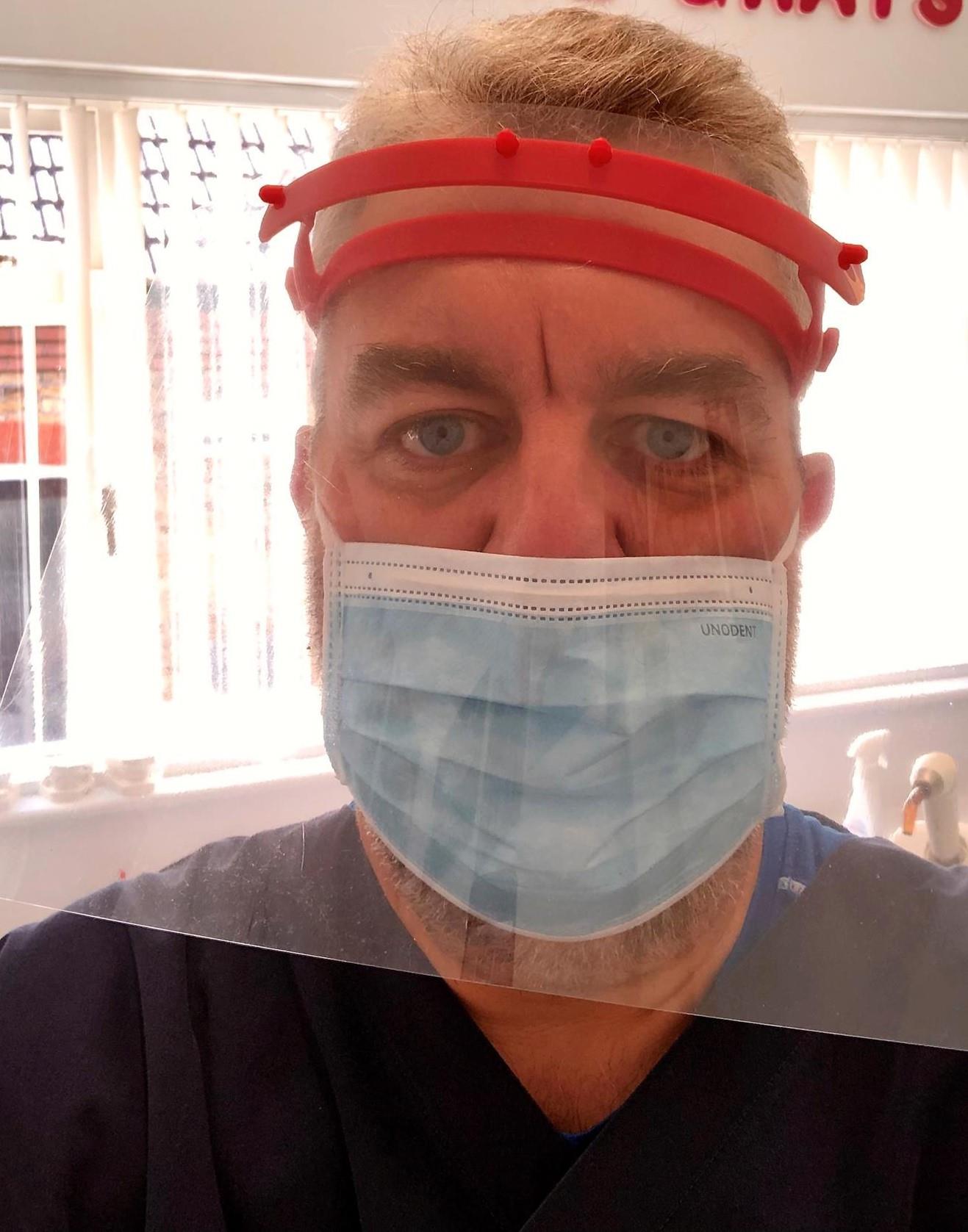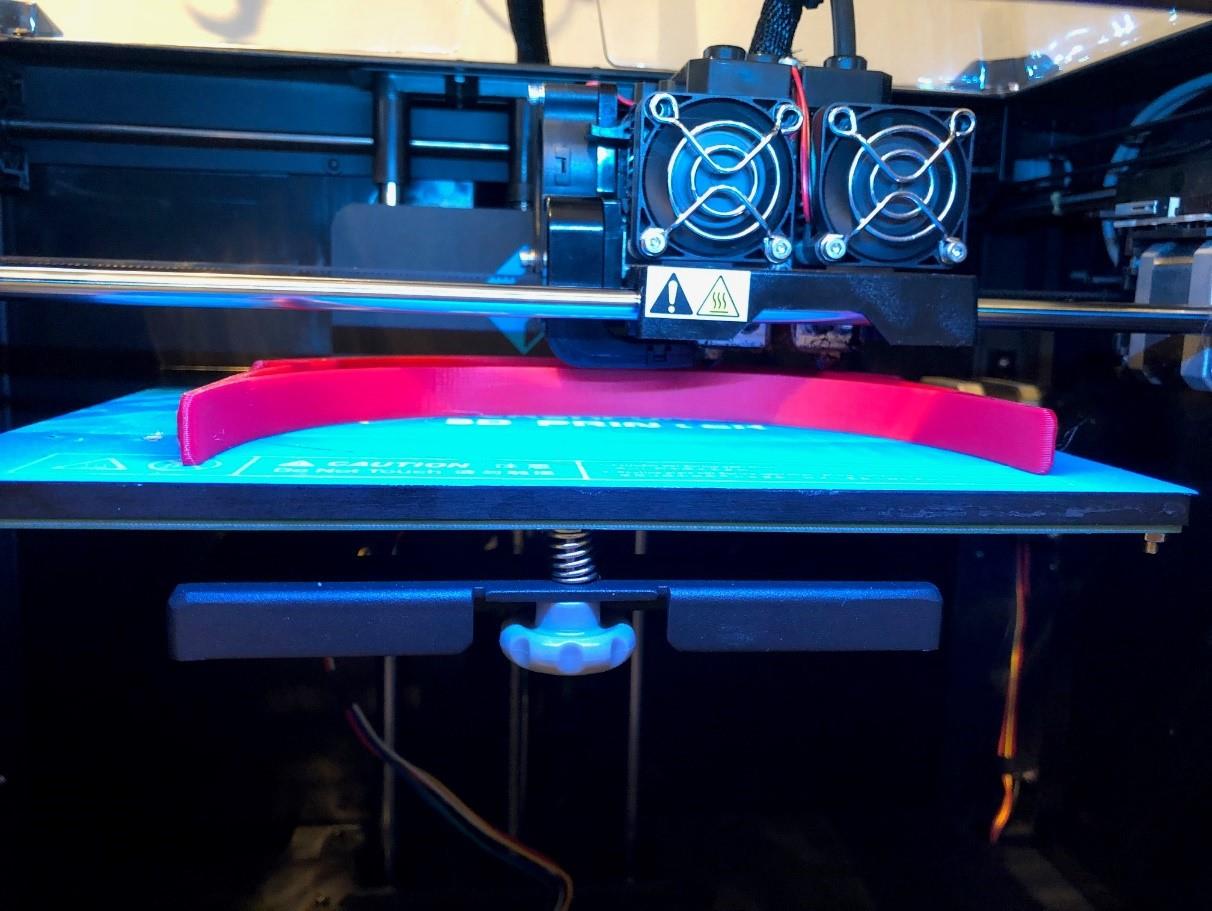As a consequence of the COVID-19 pandemic there has been a worldwide shortage of all types of personal protective equipment (PPE). To counter this, across the world, ordinary people have been producing replacements for these pieces of in-demand PPE.
Currently, across the UK, there are thousands of people collaborating and using their own 3d printing machines to produce the plastic headbands for shield visors that are required when treating potential COVID-19 patients.
The Rotary Club of Grays Thurrock have donated £500 towards the production of these visors and these are being distributed to local NHS workers who need them. Our gallant hero wished to remain anonymous but our thanks go out to him!
pictured trying out the PPE visor is local dentist Mr Iain Ramsay

click through to see how the process works
Over the past decade, the fast-paced development of 3d printers has meant that this technology is now reliable, quick and relatively easy to get to grips with, and is now affordable enough for domestic use as a hobbyist machine. The majority of these machines use a technology called Fused Deposition Modelling (FDM), or Fused Filament Fabrication (FFF). In FDM, an object is built by selectively depositing melted material in a pre-determined path layer-by-layer. The materials used are thermoplastic polymers and come in a filament form.
Typical 3d Printer

The Visor Factory

first layers being printed

midway through the build

the final product

Once this piece has been printed, a standard hole punch can be used to form the holes required in a piece of clear plastic sheet which then attaches using the 4 pegs on the front of the headband.
The clear plastic sheet can be attached in either portrait or landscape and then elastic bands or elastic fabric can be used to attach the visor to the head.
